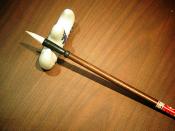Since Hong Kong was a British colony, under the British administration, the Letters Patent and the Royal Instructions issues by the Crown of England were the legal basis of the structure of the Hong Kong government.
Under this system, the British had the monopoly of power. It was also an executive-led government. The governor appointed by the crown of England was the representative and top decision-maker in Hong Kong. He was very powerful.
Firstly, he had legislative power, with his veto power over bills. In other words, if he did not agree with the bills, they could not become laws. Secondly, he also had executive power. He made all the policies in Hong Kong. Moreover, he chaired over both the Legislative Council and the Executive Council and dictated all the agendas. Thirdly, he had appointment power. All the Ex-Officio, Official and Unofficial members of both Councils, judges and all Justices of the Peace were appointed by the governor.
On the other hand, he also had the right to dismiss any government officials (except the Chief Secretary, the Financial Secretary, the Attorney-General, the Chief Justice and the Commander British Forces). Fourthly, he had military power as he also held the title of the Commander-in-Chief of the British Forces in Hong Kong. Fifthly, he had the power to pardon. Any criminals could be pardoned, even those who had been sentenced to death. Last but not the least, he had other powers like granting lands within Hong Kong. The governor basically controlled over all the matters of Hong Kong. However he had to report duty by visiting Britain annually.
Directly under the governor were the Executive and Legislative Councils. The Executive Council established in 1843, was responsible for advising the government on policies and evaluating the bills before they were being discussed...


